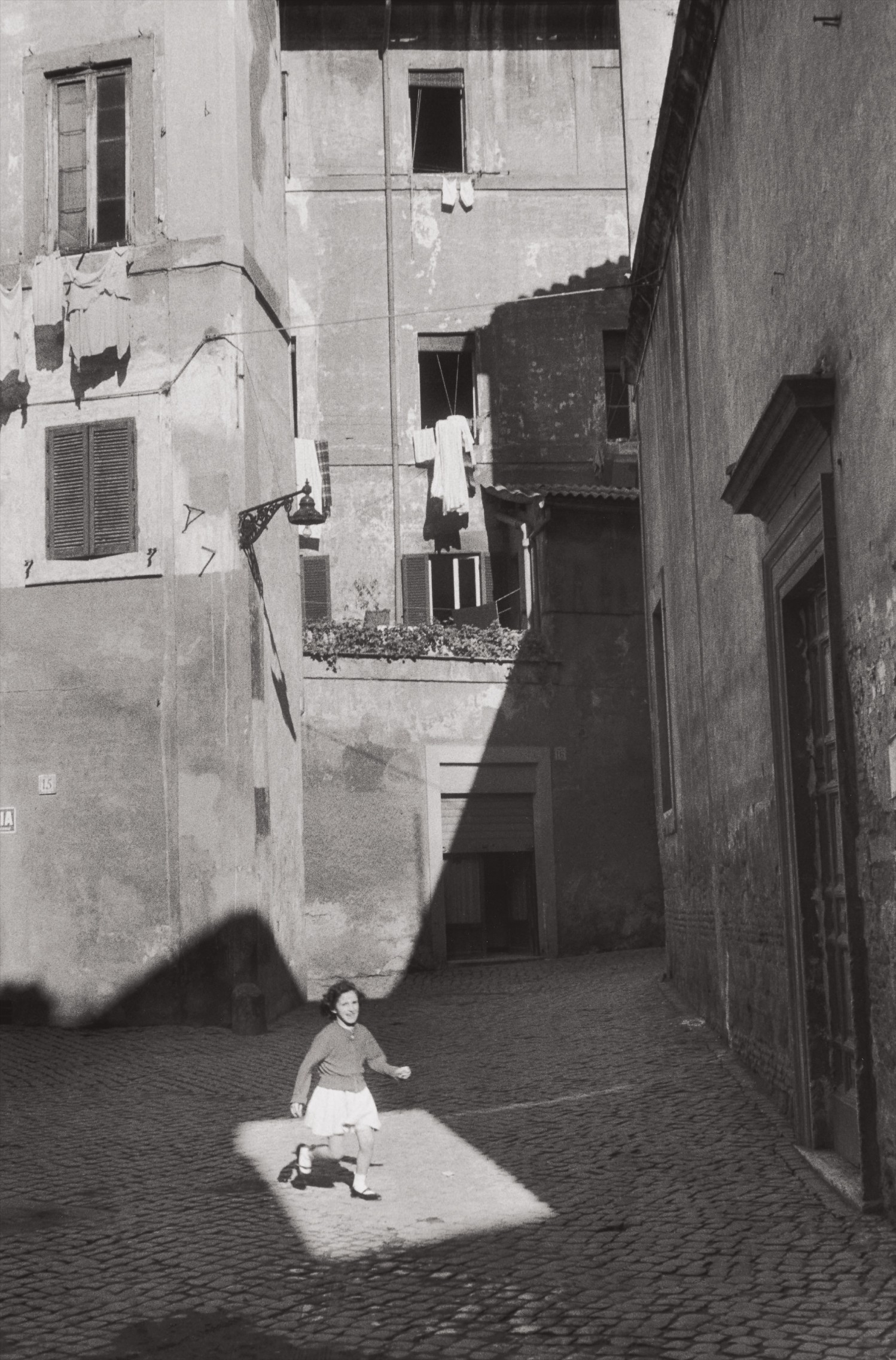

42
Henri Cartier-Bresson
Trastevere, Rome
Full-Cataloguing
Cartier-Bresson’s trips throughout Italy also included documenting major religious events, such as the crowning of Pope John XXIII and cultural holidays like the Befana Festival during Epiphany. The folklore of the Befana tells, the tale of an elderly woman who travels by broomstick to deliver gifts to children on Epiphany Eve, a Christian holiday. Photo-stories of these events illustrated the deeply rooted influence of Catholicism on Italy’s religious-political structures, and on the country’s idiosyncratic cultural nuances.
Henri Cartier-Bresson
French | B. 1908 D. 2004Candidly capturing fleeting moments of beauty among the seemingly ordinary happenings of daily life, Henri Cartier-Bresson's work is intuitive and observational. Initially influenced by the Surrealists' "aimless walks of discovery," he began shooting on his Leica while traveling through Europe in 1932, revealing the hidden drama and idiosyncrasy in the everyday and mundane. The hand-held Leica allowed him ease of movement while attracting minimal notice as he wandered in foreign lands, taking images that matched his bohemian spontaneity with his painterly sense of composition.
Cartier-Bresson did not plan or arrange his photographs. His practice was to release the shutter at the moment his instincts told him the scene before him was in perfect balance. This he later famously titled "the decisive moment" — a concept that would influence photographers throughout the twentieth century.